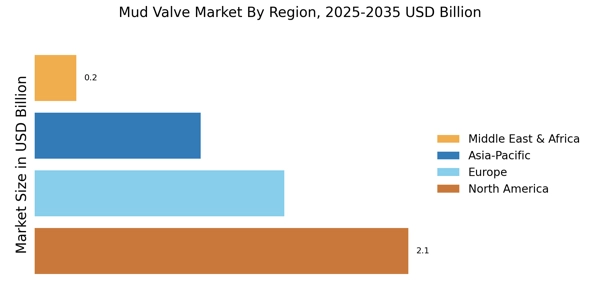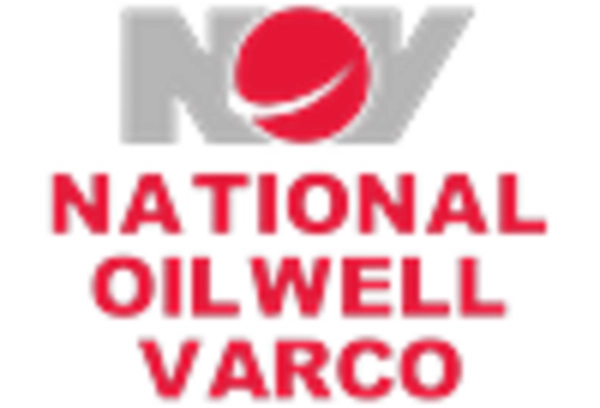Rising Demand for Oil and Gas
The Mud Valve Market experiences a notable surge in demand driven by the oil and gas sector. As exploration and production activities expand, the need for efficient drilling operations increases. Mud valves play a crucial role in controlling the flow of drilling fluids, thereby enhancing operational efficiency. Recent data indicates that the oil and gas industry is projected to grow at a compound annual growth rate of approximately 5% over the next few years. This growth is likely to stimulate investments in drilling technologies, further propelling the Mud Valve Market. Additionally, the increasing complexity of drilling operations necessitates advanced mud management systems, which mud valves are integral to. Consequently, the rising demand for oil and gas is a significant driver for the Mud Valve Market.
Expansion of Renewable Energy Projects
The Mud Valve Market is also affected by the expansion of renewable energy projects, particularly in the wind and geothermal sectors. As the world shifts towards sustainable energy sources, the need for efficient drilling solutions in these projects increases. Mud valves are essential for managing drilling fluids in geothermal energy extraction and wind turbine foundation installations. The renewable energy sector is anticipated to grow significantly, with investments projected to reach hundreds of billions of dollars in the next decade. This growth presents a unique opportunity for the Mud Valve Market, as the demand for specialized mud valves tailored for renewable energy applications is likely to rise. The intersection of renewable energy initiatives and mud valve technology could lead to innovative solutions that address both energy needs and environmental concerns.
Environmental Regulations and Compliance
The Mud Valve Market is influenced by the growing emphasis on environmental regulations and compliance. As industries face increasing scrutiny regarding their environmental impact, the demand for equipment that meets stringent regulatory standards rises. Mud valves, which are essential for managing drilling fluids and minimizing environmental risks, are becoming more critical in this context. Regulatory bodies are implementing stricter guidelines for fluid management, which necessitates the use of advanced mud valves that ensure compliance. This trend is likely to drive innovation within the Mud Valve Market, as manufacturers develop products that align with environmental standards. The focus on sustainability and compliance is expected to shape purchasing decisions, further propelling the demand for mud valves.
Increased Investment in Infrastructure Projects
The Mud Valve Market is positively impacted by the rising investment in infrastructure projects across various sectors. Governments and private entities are increasingly allocating funds for infrastructure development, including transportation, energy, and water management systems. This trend is expected to create a substantial demand for drilling activities, which in turn drives the need for mud valves. Recent reports suggest that infrastructure spending is projected to reach trillions of dollars in the coming years, indicating a robust growth trajectory. As these projects often require extensive drilling operations, the Mud Valve Market stands to benefit significantly. The correlation between infrastructure investment and the demand for mud valves underscores the importance of this driver in shaping market dynamics.
Technological Innovations in Drilling Equipment
Technological advancements in drilling equipment significantly influence the Mud Valve Market. Innovations such as automated drilling systems and real-time monitoring technologies enhance the efficiency and safety of drilling operations. These advancements necessitate the integration of high-performance mud valves that can withstand extreme conditions and provide precise control over drilling fluids. The market for advanced drilling technologies is expected to grow, with estimates suggesting a potential increase of 6% annually. This trend indicates a shift towards more sophisticated drilling solutions, which mud valves must adapt to. As operators seek to optimize performance and reduce costs, the demand for technologically advanced mud valves is likely to rise, thereby driving the Mud Valve Market forward.


















Leave a Comment